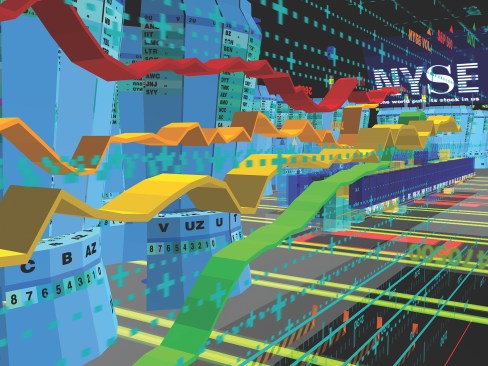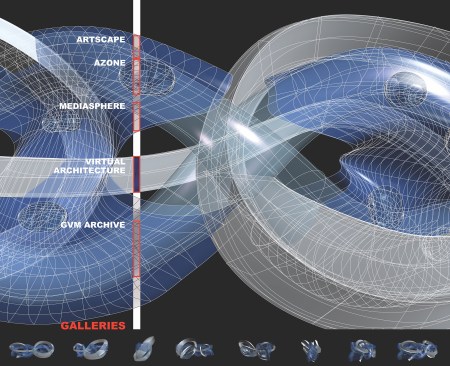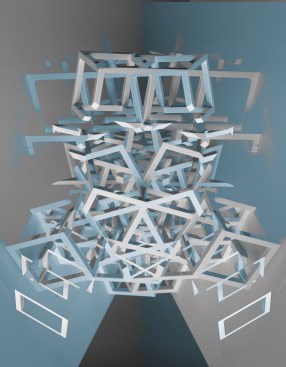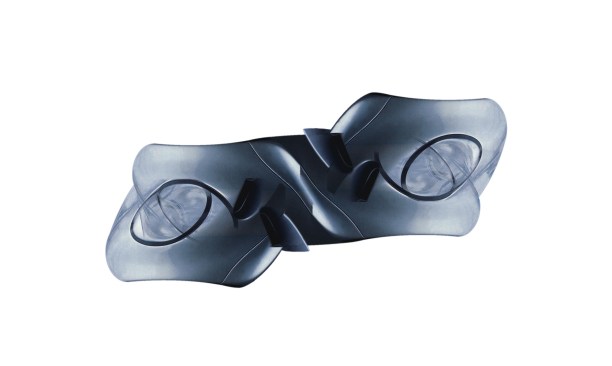If there is still solace to be found in good plans and craft, how can their roles in architecture address the increasing virtual and hyper—but not false—reality of the society which they construct? According to the New York-based architect Hani Rashid of Asymptote Architecture, writing in the (of course) e-magazine e-flux, it is to find ways in which its “spatial and tectonic results” can “address” this “new realm.” (I guess I would be old fashioned to call them “buildings.”)

Asymptote Architecture: Hani Rashid + Lise Anne Couture
Sure, that sounds more than a bit vague, but both Rashid’s argument and the evolution of the firm’s designs (with Asymptote partner Lise Anne Couture) do combine to give us a strong sense of what he means. In the article, Rashid recalls his firm’s early forays into purely digital architecture, including a commission for the New York Stock Exchange to build a virtual trading floor to mirror the physical one and another for the Guggenheim Museum to create an equally unreal repository for its digitally native art. He leaves unmentioned one of Asymptote’s even more daring experiments: the “Flux” series of digital sculptures, which exist only as projections. At that early time for Asymptote, Rashid—who also spearheaded, with Greg Lynn and Scott Marble, Columbia University’s “paperless studios”—was one of the revolutionaries who led the way towards imagining a world, now seemingly closer to reality than ever, in which augmented and even completely virtual scenes would replace the sticks and stones with which we build our boxes.

Asymptote Architecture: Hani Rashid + Lise Anne Couture

Asymptote Architecture: Hani Rashid + Lise Anne Couture
Hyperfine Splitting 008_Mediations on Jakob's Ladders – for Schosslichtspiele
Over time, Asymptote’s tastes changed from virtual architecture to hyper-real buildings. The firm became a leading avatar of “blobitecture,” creating the sort of sweeping and swooping designs that are now so ubiquitous that they threaten to become corporate clichés—as all avant-garde movements in architecture eventually become.
Rashid is careful to mark the distinction between the virtual and the hyper-real. While the former has its roots in the work of Piranesi, Bruno Taut, Frederick Kiesler, and Lebbeus Woods, the latter is more part of the baroque tradition of exaggeration. Rashid points out the resurgence of what is essentially a stylistic response to the increase in scale and complexity of our world—such movements always appear at the moments of social transition—in the work of artists as diverse as Ron Mueck, Olafur Eliasson, and John Currin. I would add that you could also see such developments in the “swerve and curve” tendencies of older and more accomplished artists and architects—from Henri Matisse and Willem de Kooning to Frank Gehry, FAIA—who sought to push their work beyond the boundaries of what they had done and society had accepted up until then.

Asymptote Architecture: Hani Rashid + Lise Anne Couture
I_Scape – TZ Art Gallery Installation 1999
Whereas the virtual, experimental, and utopian is by nature both revolutionary and bound to be unbuilt, the hyper-real either sublimates the revolutionary impulses or seeks to make the new real and effective, depending on your interpretation. There is, in other words, a direct line from Versailles, Charles Garnier’s Paris opera house, and Erich Mendelsohn’s Einstein Tower, to the later work of Zaha Hadid and Asymptote.
Having come to the realization that they were engaged in a stylistic response that had developed organically out of their desire to move beyond current reality, Asymptote has, in its most recent projects, abandoned its bodacious blobs in favor of what appear at first glance to be more traditional structures. Rashid illustrates this development using the firm’s Hermitage Modern Contemporary Museum in Moscow, on which the firm has been working for the last two years. He claims that this 140,000-square-foot satellite structure will have surfaces that are “time-based and malleable,” that will house a stack of open and closed spaces around a spiraling central atrium. They aim to achieve this result with “reflected, refracted, transmitted, and filtered light” that will “play against a seemingly solid yet fluid exterior” that houses an interior of “constant overlays.”

Asymptote Architecture: Hani Rashid + Lise Anne Couture
Instead of either being virtual or hyper-real, in other words, the new Hermitage sibling will both frame and echo the kinds of effects that new technologies make possible. It will appear unstable—Asymptote claims the design was inspired by El Lissitzky’s gravity-defying “Proun” paintings—and will blur boundaries, scales, and the very idea of what is solid and what is void. It will be light and stretched, cantilevered, and as thin as the architects can make it. The building, in other words, will be rococo.

Asymptote Architecture: Hani Rashid + Lise Anne Couture
For that is where we are now in the cycle of styles and movements. After the revolution of virtual reality’s new classicism changed everything, and then after the following baroque blobs built and deformed this initial optimism, the new rococo turns inwards to explore the possibilities and the sensuality of a world that we can now craft and inhabit with new tools and in new ways.
If we are, truly, at that point in the eternally recurring seasons of art, then what awaits us next is the rise of a new order: a neoclassicism that will be both back-to-basics and ethereal, and that will shimmer as a veil before the prospect of the next revolution. We thus await the architects of not the virtual or hyper, but instead of alternative reality.
